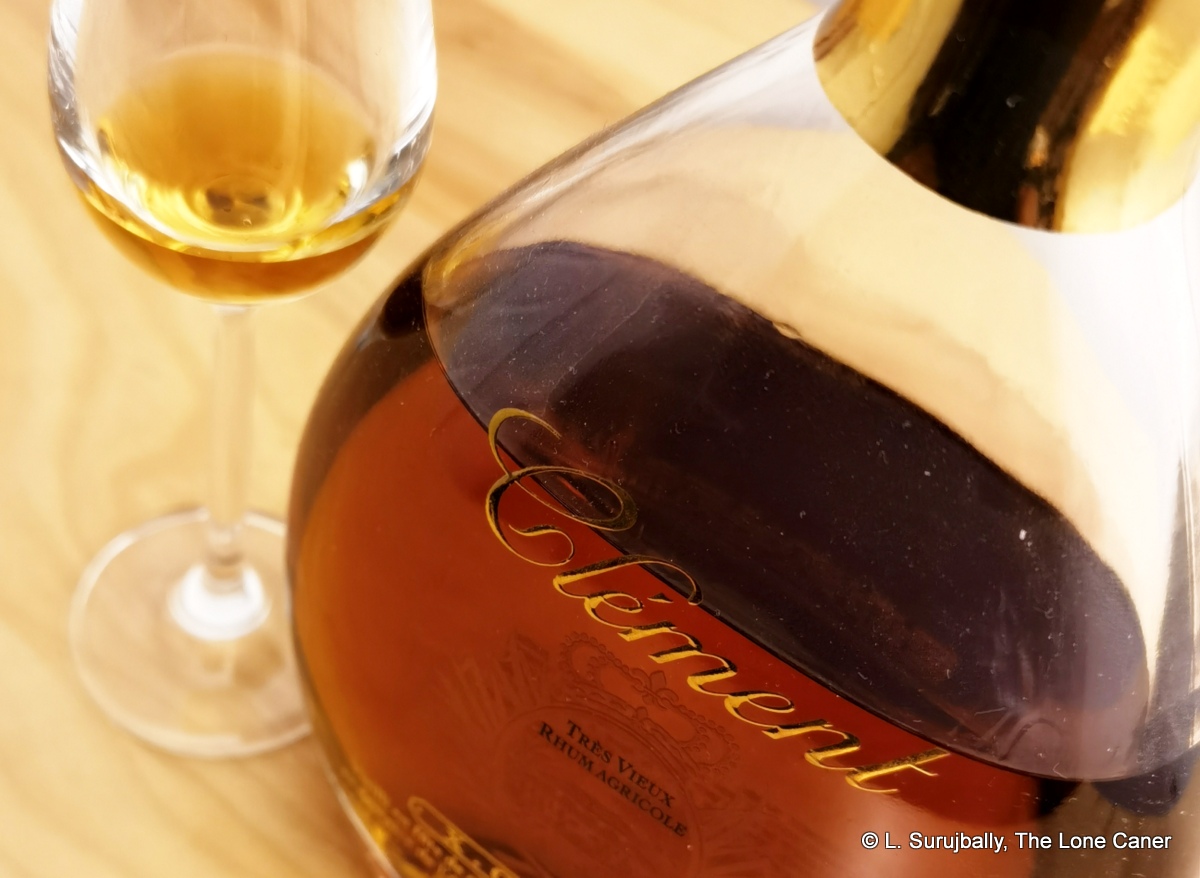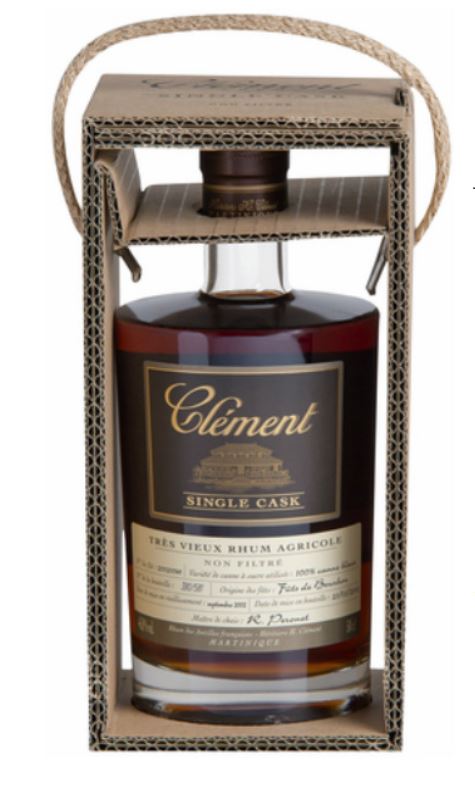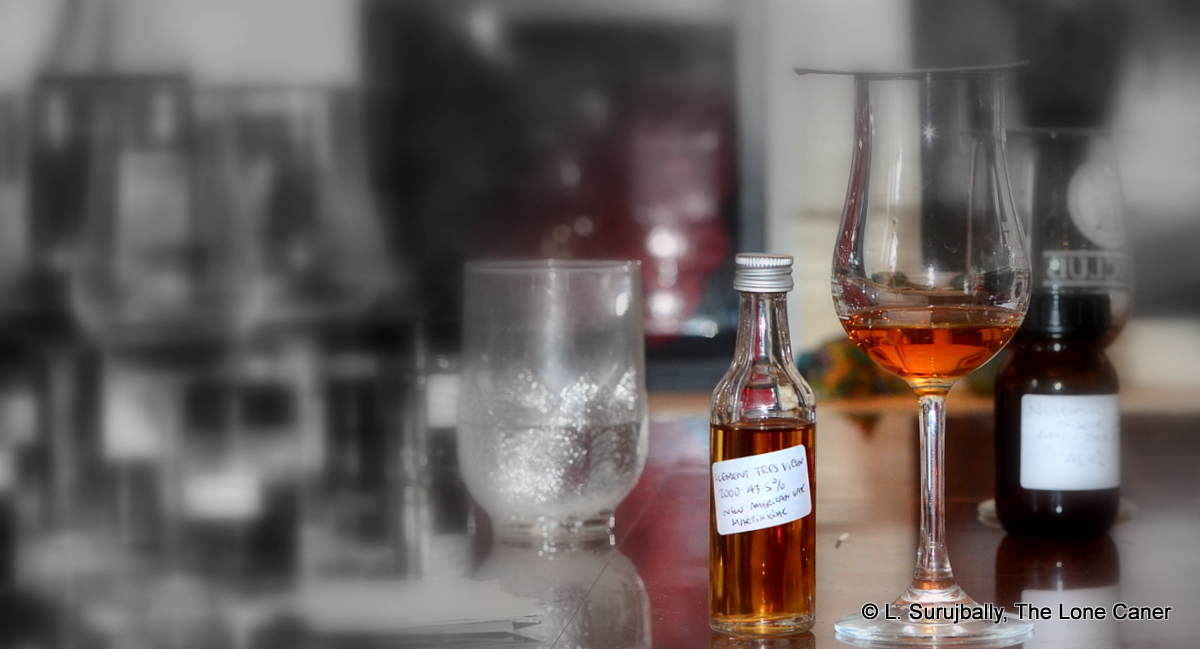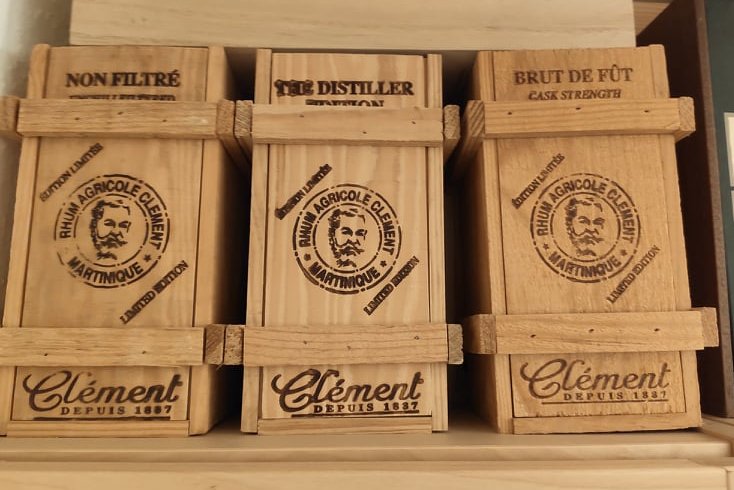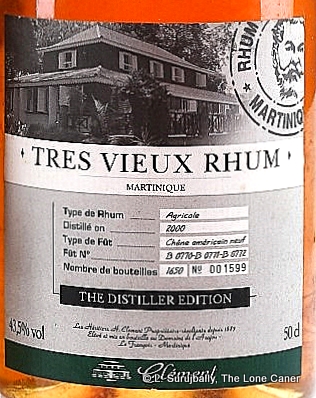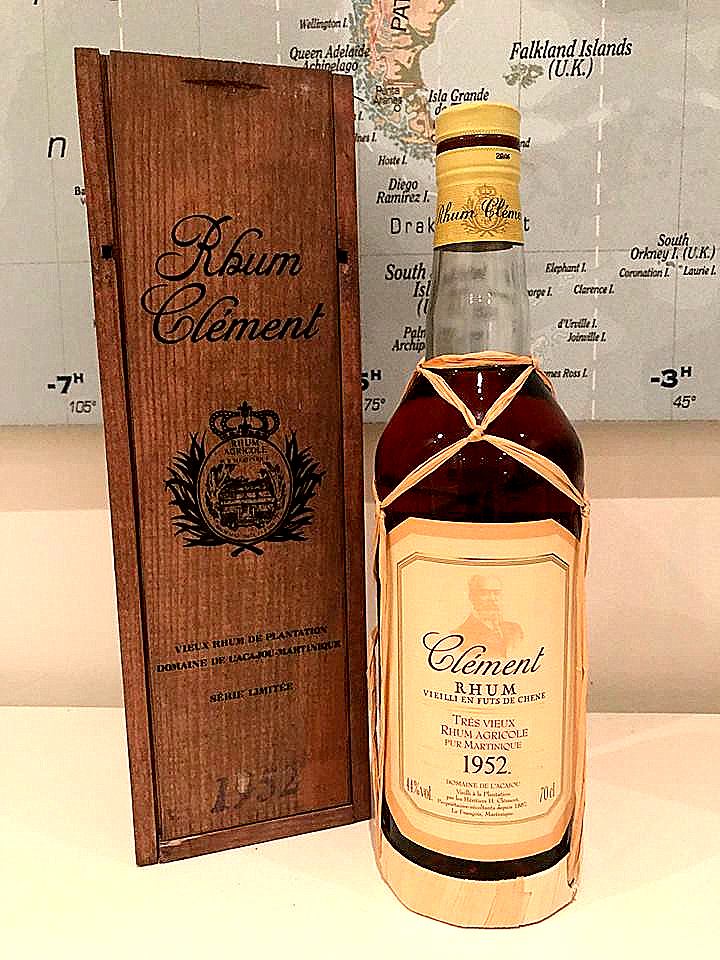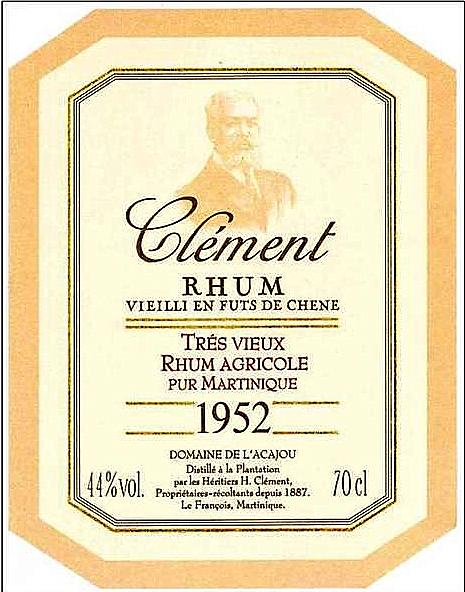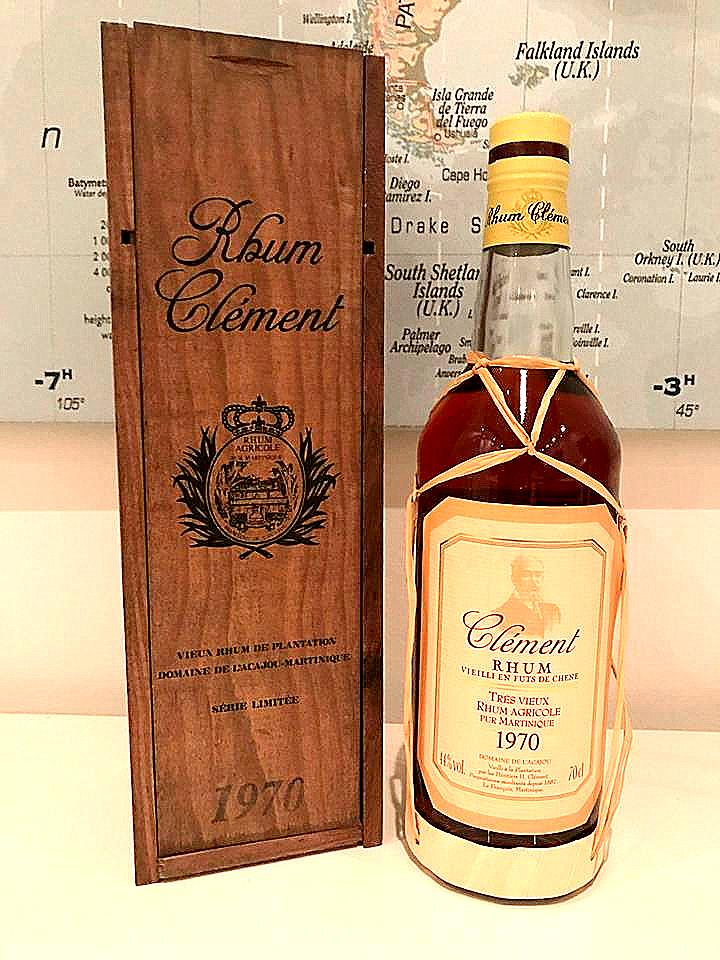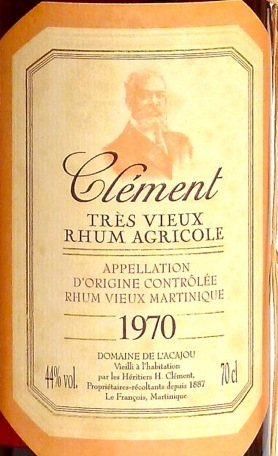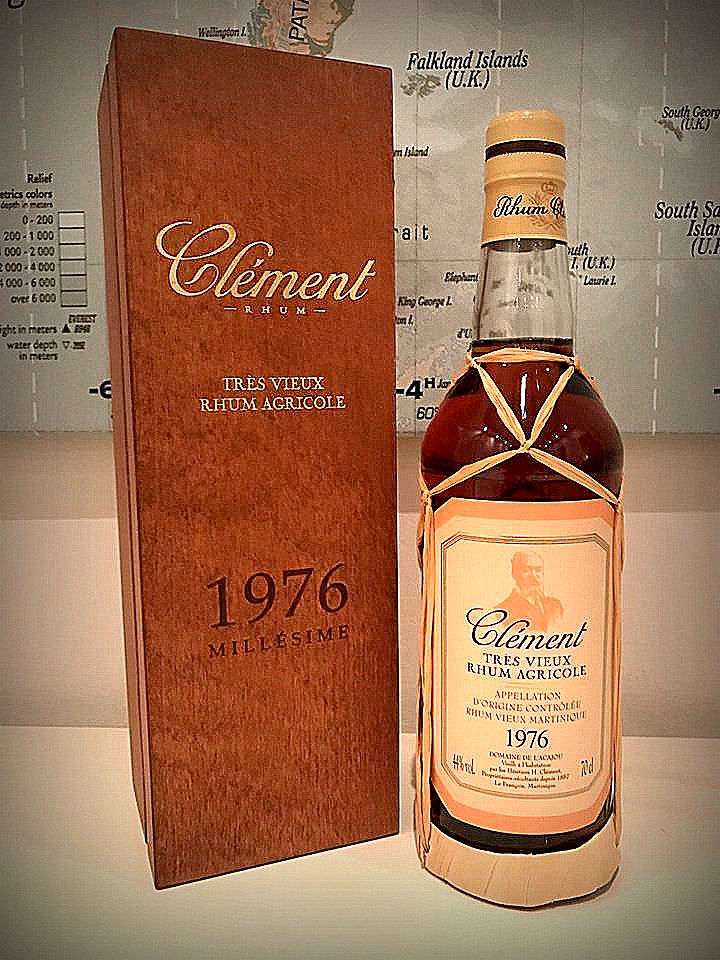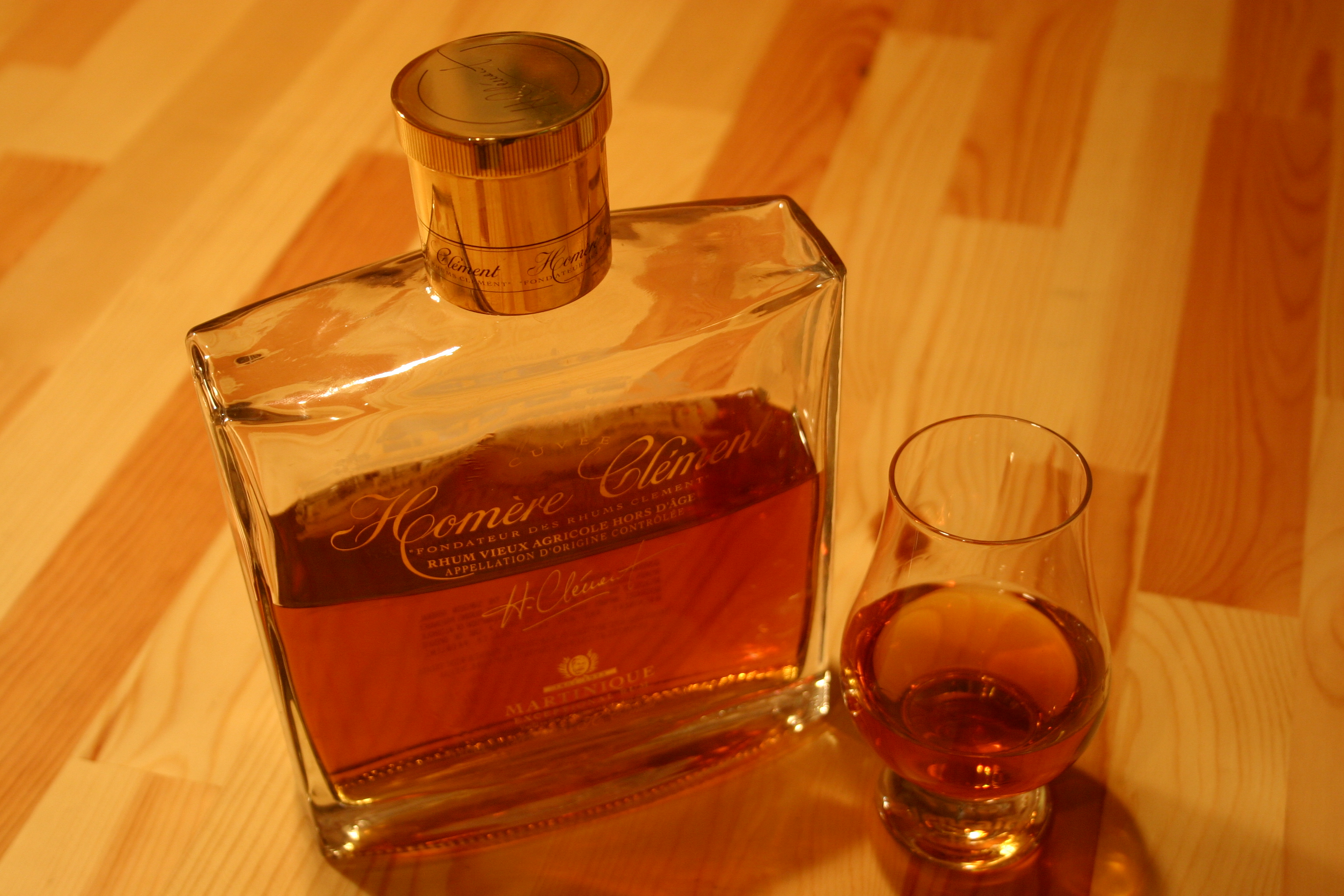Rumanicas Review R-161 | #1047
You want to careful ordering a Clement XO rhum because there is another one also named thus which is not this at all; and two others with the same bottle shape but different names. Fortunately the other XO has a different bottle style and a different strength and lacks the word “Très” (very) in the title, and the ones that do take the bottle design are called l’Elixir or Cuvée Spéciale XO. So just a little caution is all I’m suggesting.
In another odd circumstance, the subject of today’s retrospective also lacks almost any reviews in the online rumisphere aside from Rum-X (of course) and my own unscored 2010 review. In fact, it does not even appear on Clément’s own website under any of its various collections – Old, Tradition, Modern, Iconic Blue Cane or Cuvee. The closest one gets to it is the sales on auction sites and as far as I can tell, RumAuctioneer put one up a few times, the last time being in 2021 where it fetched a surprisingly modest £150.
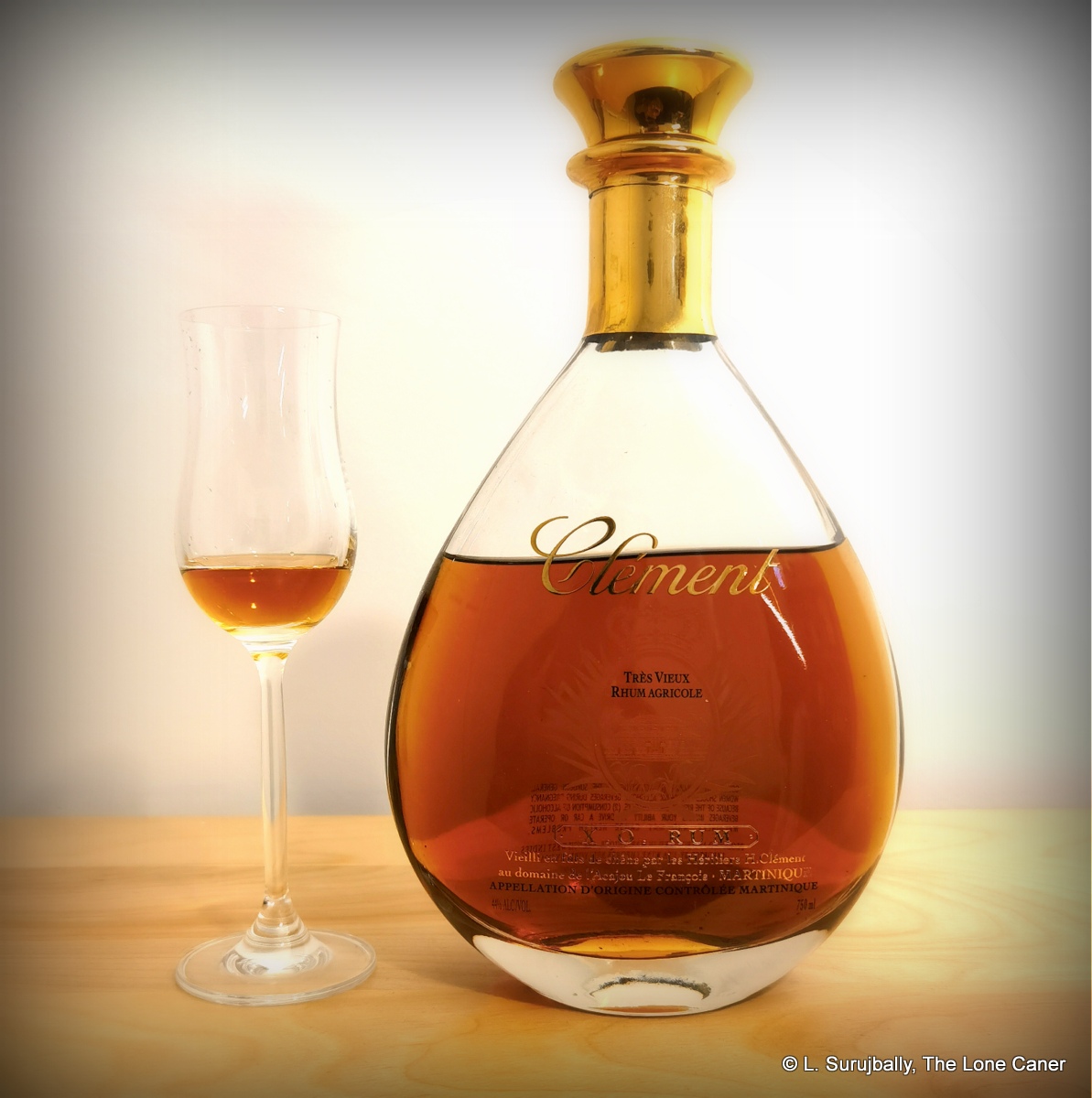 What this is is one of the first of the premium blends the company put out and is a marriage of what they felt was three exceptional years’ production: 1952, 1970 and 1976, which were also released as individual millesime bottlings. It’s unclear those individual releases were issued before or after this blended XO (I only managed to acquire samples of each many years later). But since the 1952 component has now run out, the specific blend comprising the XO is now defunct and while the company uses the same sleek bottle for other XO rhums, the label is subtly different for each, denoting a different product.
What this is is one of the first of the premium blends the company put out and is a marriage of what they felt was three exceptional years’ production: 1952, 1970 and 1976, which were also released as individual millesime bottlings. It’s unclear those individual releases were issued before or after this blended XO (I only managed to acquire samples of each many years later). But since the 1952 component has now run out, the specific blend comprising the XO is now defunct and while the company uses the same sleek bottle for other XO rhums, the label is subtly different for each, denoting a different product.
Note also that whether the rum is composed exclusively of those three vintages or is a blend that includes them, is currently unknown. Dave Russell in his 2017 review thought the latter, and David Kanj on Facebook (who brought it to my attention) said he had never been able to confirm it with Spiribam either. Will update, if I can nail it down one way or the other.
Colour – Gold
Strength 44%
Nose – Luscious; deep fruitiness; persimmons, passion fruit. Herbs, cinnamon, vanilla, light toffee, apricots. Green apples and ripe dark grapes. Very appetising and aromatic, if not as crisp and clean as a modern agricole. Just really pungent and complex.
 Palate – There’s a smoky, dry. leathery tang of an old port to the initial tastes, but it comes over nicely because of the heft and solidity n the tongue – the mouthfeel is really quite good. Apples, apricots, hard yellow mangoes on the edge of going soft, and raisins and red wine. To be honest, after years of acclimatising myself to rums at 60% ABV or greater, the XO here no longer demonstrates sharpness (as I commented in my original review) but crisp solidity, even a touch of softness.
Palate – There’s a smoky, dry. leathery tang of an old port to the initial tastes, but it comes over nicely because of the heft and solidity n the tongue – the mouthfeel is really quite good. Apples, apricots, hard yellow mangoes on the edge of going soft, and raisins and red wine. To be honest, after years of acclimatising myself to rums at 60% ABV or greater, the XO here no longer demonstrates sharpness (as I commented in my original review) but crisp solidity, even a touch of softness.
Finish – Just excellent. A fitting conclusion to a delicious dram. Crisp, slightly sweet, smooth, deep, dry and with yellow almost-overripe fruits at every turn.
Thoughts – I was right not to score this at the beginning of my rum journey, since in 2010, the chops to evaluate it was lacking – to this day we still see too few agricoles in Alberta. Back then I commented on its sharpness and its taste without being too chuffed by it. Coming back after a span of nearly fourteen years, I appreciate it much more for what it is: one of the best aged agricole blends I’ve been fortunate enough to try. Those who have a bottle squirrelled away have a real treasure in their cabinets, a delicious dram representing a time traveller washing up on our modern shores, from the far off Days of Ago.
(88/100)
Other notes
- The AOC was first established in 1996, so none of the component rhums conformed to the restrictions; irrespetive of the AOC on the label, then, those expecting a clean, grassy, herbal modern agricole might be somewhat taken aback by the profile, which has its own unique vibe. I assure you, however, it’s all to the good.
